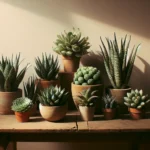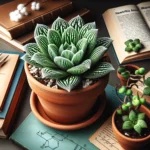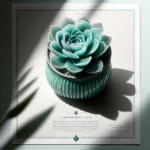Introduction to Haworthia
Welcome to the enchanting realm of the haworthia, one of nature’s most durable and delightful succulents. Perhaps you’ve stumbled upon these small, rosette-forming wonders while meandering through botanical collections, or you might even be pondering the addition of a haworthia to your indoor oasis.
Peeking out from the bright windowsill, a haworthia flaunts its thick, fleshy leaves that brim with patterns as unique as fingerprints. Picture this: each leaf armored with pearly bumps or streaked with soft white variegation, a visual rhythm matching the ebb and flow of a serene landscape. It’s a tableau so serene that you could almost hear the whisper of the breeze through its succulent clusters.
Delve into the practical side of haworthia care with an informative guide that caters to both budding enthusiasts and seasoned collectors alike. Learn how to nurture these low-maintenance beauties, ensuring that their vigor and charm endure through the seasons.
A story circulates among plant aficionados about a haworthia that persevered on a rain-deprived windowsill, its plump leaves holding reservoirs of water, each drop a lifesaving elixir during the harshest of droughts. This tenacious spirit epitomizes the haworthia’s capacity to thrive with minimal fuss. They bask in the morning sun, while shaded afternoons shield them from the unforgiving rays – an ideal balance that mimics their native South African homelands.
To truly grasp what makes the haworthia a jewel among succulents—and how to replicate that resilience in your own home—set aside some time to watch this insightful video:
Lastly, explore succulent landscapes that embrace the distinct form and texture of the haworthia, blending them with other drought-tolerant companions. Imagine a harmony of form and color, with the architectural haworthia at the center, breathing life into spaces that once knew only the mundane.
Embrace the world of haworthia. It’s not just plant care; it’s a voyage to a miniaturized, yet expansive universe, a place where each leaf tells a story of survival and splendor. And it is these stories that deepen our profound connection with the natural world, one plump, patterned leaf at a time.
Unveiling the Haworthia Varieties
Let’s dive into the world of Haworthia, a group brimming with fascinating species each flaunting its distinct charm. As you embark on this botanical exploration, you’ll be greeted by an array of forms, from the robust, aloesque appearance of Haworthia cymbiformis to the translucent, opalescent pebble-like windows of Haworthia cooperi. Each variety unveils a special story, adapting to their niche in nature with remarkable resilience and beauty.
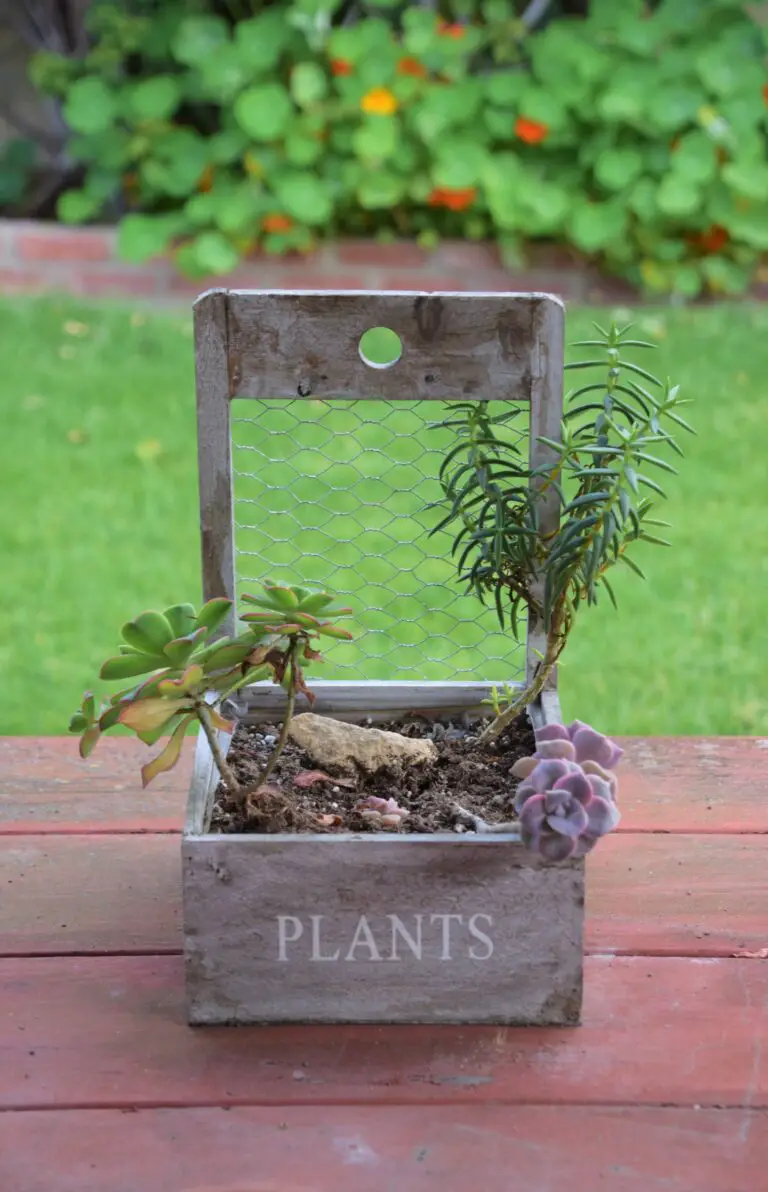
Imagine the gritty, arid landscapes these succulents call home, where their quirky leaf formations—an evolutionary masterpiece—enable them to thrive. The architectural rosettes formed by the likes of Haworthia attenuata, with its stark white stripes, serve more than a decorative purpose. These features cleverly minimize the sun’s harsh impact while maximizing water storage, ensuring survival in challenging conditions. It’s a testament to nature’s ingenuity, and a true spectacle for any plant enthusiast.
What’s more, Haworthias are notoriously undemanding, cozying up to indoor environments with ease – a perfect addition for modern dwellers seeking a touch of greenery. So whether you’re nurturing a miniature garden on the balcony or adding a splash of nature to your work desk, these succulents adapt with grace and minimal fuss. Let’s not forget, their modest size makes them ideal candidates for creative container compositions, integrating seamlessly into diverse decor styles.
Engage with the Haworthia lineage, and you’ll be enchanted by their story of adaptability and visual diversity. From the windowpane patterns of Haworthia tessellata to the striking silhouette of Haworthia truncata, each species presents a fresh canvas, breathing life and personality into your living spaces. Their tale is ongoing, and as a caretaker of these living sculptures, you become part of their narrative—an exhilarating privilege.
With so much variety at your fingertips, isn’t it high time you found your own green muse among the mesmerizing varieties of Haworthia? Perhaps a visit to our comprehensive succulent care guide will spur that journey, equipping you with the knowledge to witness the growth and flourishing of your chosen Haworthia. Embrace the uniqueness of each specimen, and create a captivating botanical collection that speaks volumes about your own green thumb adventures.
Essential Care for Health and Beauty
Imagine walking into a room and being greeted by the captivating elegance of haworthia plants, their emerald leaves embellished with opalescent patterns powerful enough to animate any space. Now, picture nurturing such enchanting succulents in your own home. It’s easier than you think, and I’m here to guide you through the fundamental care instructions that will make your haworthia thrive.
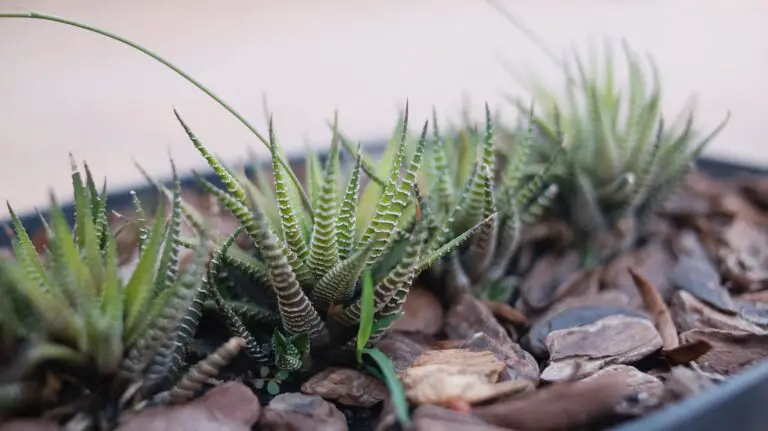
First and foremost, let’s talk about the foundation of haworthia care—the soil. Your plant is no average greenery; it demands a well-draining soil mix that emulates its natural arid habitat. Think of it as preparing a comfortable bed for your plant, one that allows it to rest without the dampness that could lead to root rot. An alchemy of potting soil, coarse sand, and perlite will do just the trick.
Watering: A Delicate Balance
Watering your haworthia can feel like a delicate dance. Too much water, and you’ll drown the atmospheric roots that gasp for air; too little, and you’ll parch the fleshier ones yearning for a drink. The secret lies in the balance. A thorough watering followed by a period of drought is the ritual that will keep your plant glistening with health. Remember, what your haworthia craves is not a frequent sprinkle but a momentary cascade when the soil feels dry to the touch—an echo of the rare desert rain.
Temperature: Warmth and Coziness
When it comes to the optimal temperature for your haworthia, think about the crisp warmth of a spring morning. These plants bask in environments that range between 65 and 80 degrees Fahrenheit (18 to 27 degrees Celsius) during the day and can tolerate down to about 50 degrees Fahrenheit (10 degrees Celsius) at night. Shielding your plant from extremes is akin to giving it a protective embrace, ensuring it stays vibrant and robust throughout the seasons.
Incorporating these care tips into your routine will not only endow your haworthia with vitality and splendor but will also fortify your connection with these mesmerizing succulents. Looking at my own glimmering haworthia collection serves as a daily reminder of the serene simplicity and inherent beauty that nature offers. And with your newfound knowledge, you’re well on your way to curating your own mesmerizing green oasis.
Solving the Sunlight Puzzle

Lovers of the understated yet striking Haworthia plant, gather round! Imagine if we could just ask our little green friends exactly what makes them happy, especially when it comes to soaking up the sun. While they haven’t mastered human speech (yet), we’ve pieced together the sunlight puzzle for these resilient succulents.
First, know that the Haworthia, with its plump leaves and mesmerizing patterns, is a bit like Goldilocks—not too keen on too much sun, nor too happy hidden away in the dark. It prefers its sunshine “just right.” A bright room with indirect light will keep your Haworthia smiling without the risk of it getting sunburned—a real concern for these shade-seeking sweeties.
But wait, what’s that you say? You saw a Haworthia thriving in the windowsill at your friend’s beach house? Fear not! These adaptable beauties have a trick up their sleeve. Much like those rare beachgoers who tan but don’t burn, Haworthia retusa, one of its variants, can endure more light than its cousins. What’s crucial is acclimating your plant slowly to brighter conditions, avoiding the harsh noon sun that could leave them feeling frazzled.
Visualize this: You’re at a café, enjoying a creamy cappuccino under the dappled shade of a street-side umbrella. That’s the kind of lighting situation your Haworthia craves. Morning or late afternoon sun can be delightful for the plant, creating an ambiance where it can bask without squinting into the harsh light. Of course, this passive solar basking knobs up their growth, making each succulent leaf plumper, each rosette tighter, and deepening those hypnotic, white-striped patterns that we swoon for.
Remember, the Haworthia is your laid-back companion, not demanding the spotlight but humbly showcasing its beauty in the softer rays. It’s not just about survival; it’s about giving your Haworthia the light it loves to truly thrive.
Mastering Repotting and Soil Composition
So, you’ve fallen for the charm of the haworthia plant! Join the club of enthusiasts who know there’s a bit more to these mesmerizing succulents than meets the eye. Let’s demystify the art of repotting – it’s not just about transferring your green buddy into a new home, it’s about ensuring a thriving future.
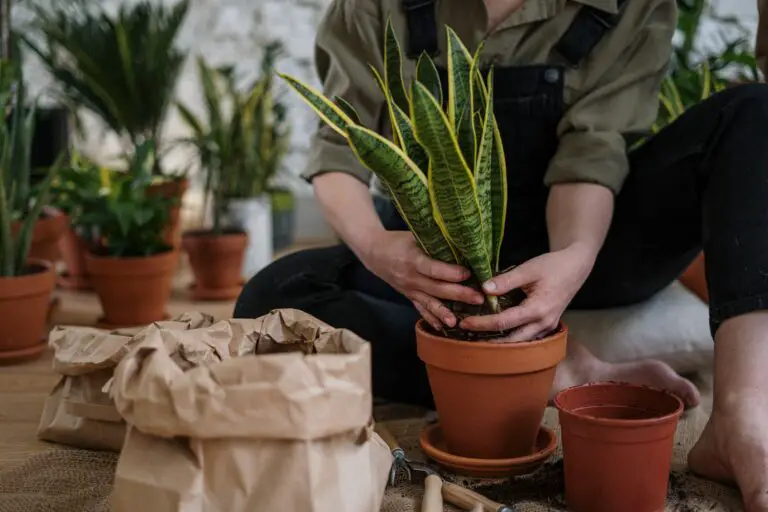
Timing is key: Your haworthia will give you signs when it’s ready for a bigger pot – perhaps roots are peeking out of the drainage holes, or growth has slowed down. Don’t jump the gun; patience pays off. Aim for the start of the growing season when your plant’s energy is high.
Visualize this: You wouldn’t wear tight shoes and expect to run a marathon comfortably, right? Well, your haworthia feels the same about pots. A new pot should be just the right size – not too large, to prevent waterlogged soil, and it’s got to have drainage holes to boot.
It’s all about the foundation – the right soil mix. Think of it like a gourmet meal for your plant. A blend that’s light and drains well is like fine dining for your haworthia. Mix in some perlite, coarse sand, or pumice with standard succulent mix. Your haworthia’s roots will thank you for the breathability and the perfect balance of moisture.
Imagine you’re mixing your favorite cocktail – that’s how you should mix your soil. It’s not just throw everything together and hope for the best. It’s a delicate balance. Too heavy, and your haworthia drowns; too light, and it’s sitting in a desert. Get your hands dirty and enjoy the process!
Action is everything. When you’re ready to repot, be gentle but firm. Loosen the roots, untangling any that have circled tightly. It’s like a plant massage, setting the stage for robust growth. Once nestled into its new abode, give your plant a welcoming drink and then let it settle.
Here’s the bottom line: Repotting is more than a chore – it’s a renewal ritual for your haworthia plant. Like changing seasons or a snake shedding its skin, it’s a natural step towards vigor and beauty. So, don your gardening gloves, and let’s get to work – your haworthia awaits its next chapter!
Propagation Techniques for Haworthia Enthusiasts
Hey there, green thumbs and succulent lovers! It’s time to dive into the fascinating world of Haworthia propagation. Whether you’re expanding your indoor jungle or gifting a piece of nature to a friend, understanding the art of reproducing these resilient plants is key. Let’s roll up our sleeves and get our hands dirty—or in this case, slightly dusty with succulent soil!
Getting Started with Offsets
First up on our propagation journey are offsets—nature’s little bonus gifts to gardeners. Offsets, or “pups,” are miniature versions of the parent plant that sprout at its base, ready to take on life as a new individual. With Haworthia, it’s like a mini-me popping up to say hello. Carefully separate these little guys with a clean, sharp knife or snip them with scissors. Plant them in well-draining succulent soil and voilà, you’ve set the stage for a new Haworthia’s adventure.
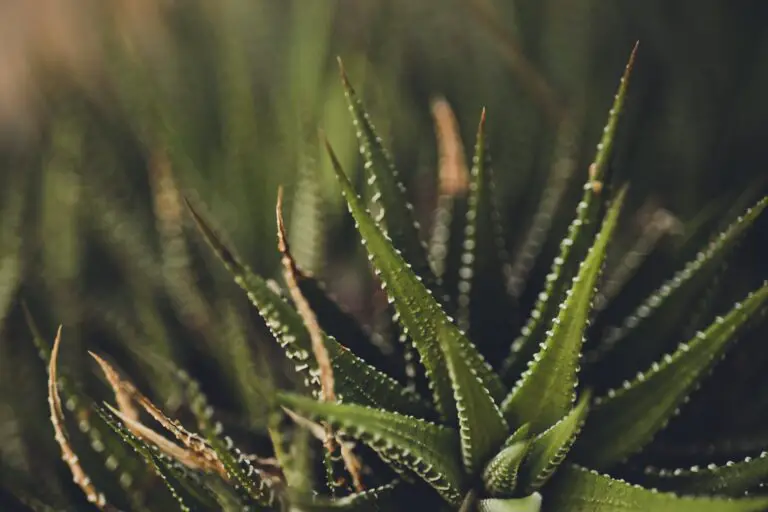
The Leaf Cutting Chronicles
Leaf cuttings, the sequel in our propagation story, might sound like a gardening fable, but they’re very real and quite effective. For Haworthia, choose a healthy, plump leaf and give it a gentle twist. Rooting hormone can be your best supporting actor here, giving that leaf cutting a rooting standing ovation. Nestle it into the soil, and let the suspense build as roots form and a new succulent star is born.
Sowing the Seeds of Growth
Finally, for those who enjoy the slow enchantment of growth from the very beginning, Haworthia seeds are your ticket to the show. Prepare a well-draining soil mix and place those tiny protagonists on top, barely covering them with a sprinkle of soil. Maintain consistent moisture and wait patiently; it’s a tale of slow victory, where patience is indeed a virtue.
Now that you’re armed with the secrets of Haworthia propagation, it’s time to put these techniques to the test. Imagine the feeling of seeing a new Haworthia sprout from your efforts, the green embodiment of patience and care. So go on, give it a try and let the wonder of propagation enrich your horticultural story.
Common Pests and Issues
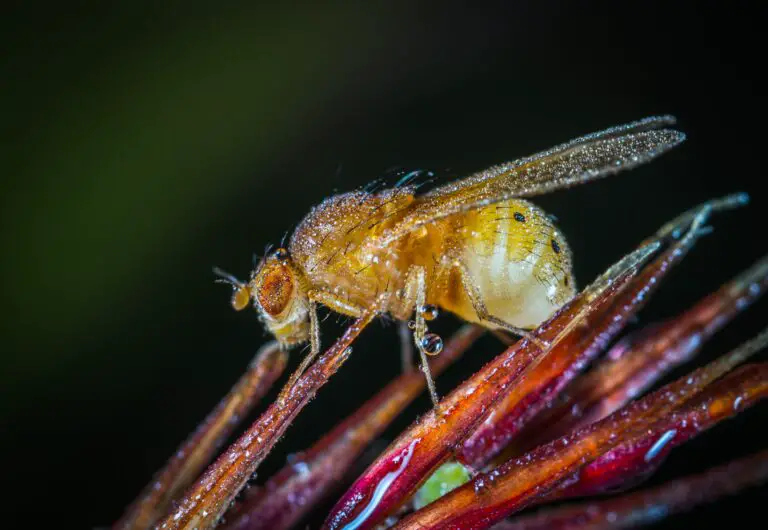
When diving into the world of haworthia plants, you’re not just getting a succulent—you’re signing up for the role of protector! These little green darlings may be tough, but they’re not invincible. They can fall prey to a variety of pesky invaders. Take the aphid, for example, a notorious little sap-sucker that often goes unnoticed due to its size. If you’ve ever seen a colony of these tiny tyrants, you’ll understand the havoc they can wreak on your haworthia’s health.
Mealybugs are another common culprit, masquerading as harmless white fluff on your plant’s base or leaves. Don’t be fooled! These critters are like the bad apples at a fruit stand—where you find one, more trouble is likely lurking. Spider mites too can turn your haworthia into their own personal buffet, spinning webs finer than any Halloween decoration while munching away at the tissue of your beloved plant.
Even with their hardy nature, haworthia are not immune to diseases. Fungal infections can sneak in, especially when conditions are a bit too damp for comfort. Overwatering doesn’t just make your haworthia ‘soggy’—it’s practically an invitation for fungi to throw a pool party in your potting soil. Root rot is a classic example: silent but deadly, often going unnoticed until the plant looks more on the side of ‘past its prime’ than perky.
Combating these pests and diseases is all about vigilance and action. Catching an infestation early can be the difference between a flourishing plant and a faltering one. Simple solutions such as a neem oil spray for those insect invaders, or adjusting your watering routine to prevent disease, can save your succulent from an untimely demise. Remember, keeping an eye out for unexpected guests and changing conditions will keep your haworthia happy, healthy, and thriving.
Designing with Haworthia
When it comes to enhancing your living space with a touch of greenery, the charismatic haworthia plant is a game changer. Imagine walking into a room where the subtle play of light casts mesmerizing shadows through the translucence of haworthia leaves. This scene isn’t just a figment of imagination; it’s an attainable design goal. Think of the delightful contrast they present against a rustic wooden bookshelf or how they introduce an organic element to a modern, minimalist desk. These succulents are not only eye-catching, but they’re also wonderfully versatile, embodying simplicity and sophistication in tiny, spiky packages.
Consider, for instance, a centrally placed haworthia in a terracotta pot on a coffee table. It becomes an instant conversation starter, akin to having a living sculpture that sparks intrigue. However, haworthia’s impact doesn’t end there. Cluster a group of these plants with varying textures and forms on a windowsill, and you create a serene, green haven that ties the room together, inviting calmness into a bustling living space.
Now, let’s talk practicality. Haworthias are forgiving plants, perfect for busy individuals or those new to the world of indoor gardening. Place them in geometric terrariums, hang them in macramé planters, or let them stand alone on a mantlepiece. Each setting reveals a different facet of their intrinsic beauty, making them adaptable decor for any style or occasion.
Real-life examples of haworthia decor speak volumes. Take, for instance, a boutique café corner where these plants sit atop each table; they blend seamlessly with the aroma of coffee and the clatter of conversations, adding an organic flair to the gastronomic experience. Or envision an open-plan office where haworthias dot the landscape, breaking the monotony of digital screens and creating an oasis amidst the daily grind.
For those looking to unleash their creativity, there’s the wonderful world of DIY with haworthias. The following video offers inspiration for using these enchanting plants in your own home decor ideas:
The impact of haworthia on interior aesthetics is undeniable. By blending form, function, and ease-of-care, these plants not only elevate the decor but also the well-being of those residing within their green embrace. It’s about designing with purpose, where haworthia plays the dual role of accent piece and serene companion, harmonizing with other elements to create spaces that are both visually stunning and soul-soothing.
Frequently Asked Questions
Are you mesmerized by the rosette swirls of the haworthia plant and eager to unlock the secrets of its care? Let’s dive into some of the most common questions buzzing in the world of haworthia enthusiasts! Whether you’re a seasoned green thumb or a newbie to the succulent scene, these tips will help ensure your miniature wonders thrive.
How do I give my haworthia the care it craves?
Imagine you’re creating a mini oasis for your haworthia. These succulents love bright, indirect light but shun the harsh afternoon sun like a shy woodland creature. If you notice your haworthia turning an unsightly red or brown, that’s its way of crying out from too much sun! Find a spot bathed in gentle morning rays or filtered light to keep it happy.
Watering woes: How often should I hydrate my haworthia?
Let’s be real—overwatering is the kiss of death for succulents. Haworthias are drought-tolerant, needing a drink only when their soil is as dry as a desert dune. A simple thumb test will tell you when it’s time to quench its thirst; if the top inch feels dry, it’s time for a watering adventure. Remember, it’s better to under-water than to flood your plant’s roots into oblivion.
Troubleshooting Tips: What’s with the yellow leaves?
Yellow leaves on your haworthia could signal an SOS! It’s often a telltale sign of excessive love—too much water. Scale back on the H2O and ensure your drainage is on point. Conversely, if your green gem is turning pale and leggy, it’s stretching for more light, like a sunbather angling for the perfect tan. Adjust its spot to get that light just right.
Promoting Optimal Growth
Haworthias are more of a marathon grower than a sprinter, but some tender love can speed things up. A pot that’s snug as a bug allows for cozy root growth. And when it comes to soil, think of the perfect brownie mix: porous, airy, and well-draining. Occasionally, your haworthia will appreciate some balanced, succulent-specific fertilizer to boost its growth and keep it as plump as a well-fed caterpillar.
To dive deeper into the world of caring for your haworthia, take a glimpse at this insightful video:
Every haworthia story is unique, and yours is no exception. Keep these essentials in mind, and you’ll be on your way to crafting a haworthia haven that’s the envy of succulent collectors far and wide!
